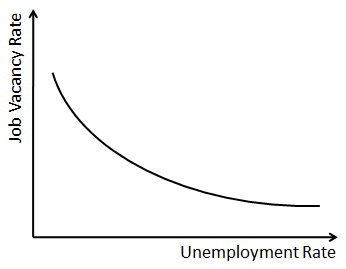
The Beveridge Curve
The pandemic caused a lot of headaches for economists using conventional wisdom to counter the effects of a scarcity of labor and an abundance of job openings.
After visiting New York recently, a colleague told me he noticed firsthand that local restaurants were in dire need of help. “I ordered Buffalo Wild Wings at 6p and I was told my order would not be ready until 9:30pm.”
Low-Wage Labor Shortages Span Industries
The shortage of low-wage workers is not confined to the restaurant industry. A study by researchers Gian-luca Violante at Princeton University and Aysegul Sahin at the University of Texas at Austin found that the number of job vacancies exceeded the number of unemployed people with experience in wholesaling, foodservice, the entertainment sector, and healthcare.
There are a number of reasons unskilled jobs in foodservice, for example, are going unfilled, among those being the regional displacement of workers, the increase in delivery (Uber, DoorDash) demand and therefore opportunities to work remotely, stimulus checks, COVID-19 concerns, childcare assistance and pent-up demand that outstripped the labor supply.
The Wall Street Journal cited a recent ZipRecruiter survey that found 70 percent of job seekers who last worked in the leisure and hospitality industry are now looking for work in a different industry. In addition, an April survey of U.S. workers who lost jobs in the pandemic, conducted by the Federal Reserve Bank of Dallas, found that 30.9% didn’t want to return to their old jobs, up from 19.8% last July.
High Skilled Positions Are Scarce
What makes this recovery also remarkable and different is that higher skilled workers are finding it challenging to find openings. In our industry, foodservice marketing, insights and events positions at the corporate level are rare and only the uber-qualified are earning the coveted spots.
Like frontline foodservice workers, business professionals are reconsidering career options post-pandemic by making industry changes, waiting on the sidelines until stimulus money runs out and moving from urban areas to suburban and rural areas as remote work has boosted the desire for quality of life.
The Beveridge Curve
The mismatch between job openings and the unemployment rate is in fact not new. Economists found in 2008 the same issue. Conventional reason dictates that as unemployment rises, job openings fall because employers have an abundance of workers to choose from.
Falling unemployment, on the other hand, is associated with a large number of openings. Economists plot this relationship in a chart called the “Beveridge Curve,” named after British economist William Beveridge who studied the difficulties of matching workers to jobs in the 1930s and 1940s.
The Covid State of Mind
In the context of restaurant employment, most of us have seen or heard about restaurants paying applicants to complete an application or increasing the pay of existing workers to an extent unheard of prior to the pandemic. Yet, operators tell us there is more at play here, which we refer to as the “Covid State.”
The Covid State seems to be a way of thinking by employees or staffers in the front lines of consumer-facing businesses that either neglect or refuse to complete assigned tasks for fear of infection.
An operator close to FSIP said workers who continued to staff her quick-service chain put limits on wiping down tables, delivering food to waiting customers and taking out the trash. “These are some of the issues we face with the limited staff we have, not to mention the problems we have with recruiting.”
Problems like the Covid State not only hinder service, but put employers in a tough spot of what to demand of staffers while ensuring they don’t quit.
Equilibrium Will Eventually Arrive
Although we’re coming out of the pandemic, it’s going to take more time for the Covid State to wane and the Beveridge Curve to again become relevant. And whether or not it does to its full extent is still in question as employers across industries attempt to determine how best to lure new and satisfy existing workers, while the unemployed continue to ponder their next move.
Like the content? Sign up to receive our communications.

Recent Comments